REVIEW / Pairs & Perils (PC)

Gimmicks are dangerous things. Some of the best ideas start with a novel mechanic and then round out into something really special. The problem with starting with a new idea, though, is that it’s easy to get tunnel vision. You make that idea the center of everything you’re doing and perfect it to a point where everything else starts feeling like an afterthought. In the world of game design, this is asking for trouble. The PC game we’ll be looking at today is Pairs & Perils, and while fun, I think this is a very good example of what I’m talking about.

Pairs & Perils is on the surface a simple matching game. You enter a dungeon and face a randomized series of foes, all with their own abilities. You are given a board of cards and must then begin to match them. If you match correctly you’ll attack with the various classes that make up your party, and kick off useful spells and abilities. If you match incorrectly you advance the turn timer of your opponent. When this reaches zero they will attack or use abilities of their own. The premise couldn’t be simpler. In and of itself I don’t have a problem with any of this and it’s a fun way to play. As usual, the areas in this game where I take issue don’t have anything to do with the mechanics, at least not the basic ones.
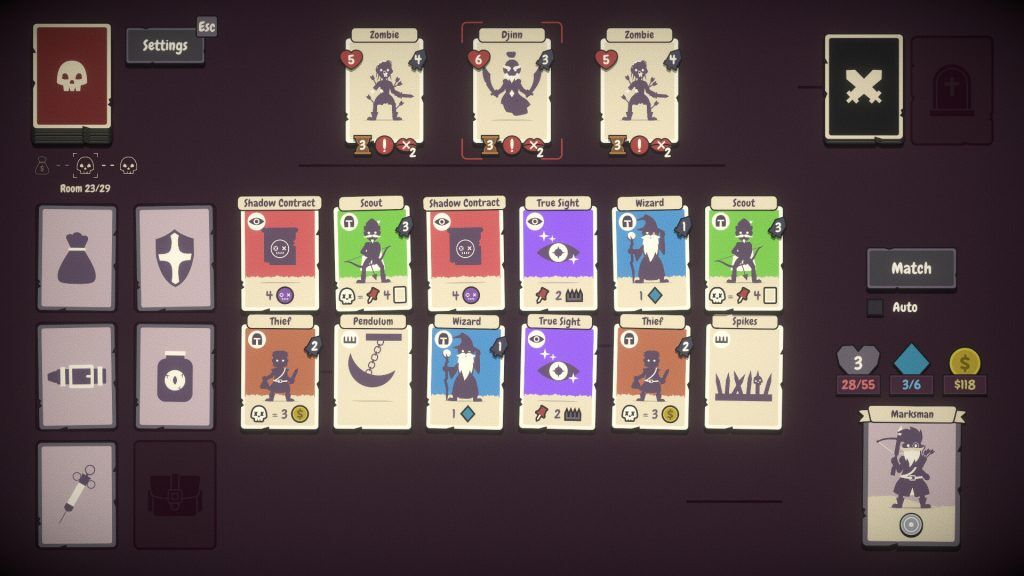
Pairs & Perils is a roguelite and on account of this being my genre I’m probably going to be a little more critical than I would usually. I’ve played a ton of these games and while they tend to follow a similar formula they have a habit of either being great or not with not a lot in between. This comes down to various factors outside of the core mechanics and the first one here is one of my biggest bugbears with a lot of these games. This concerns the story, or in this case, the abject lack of one.
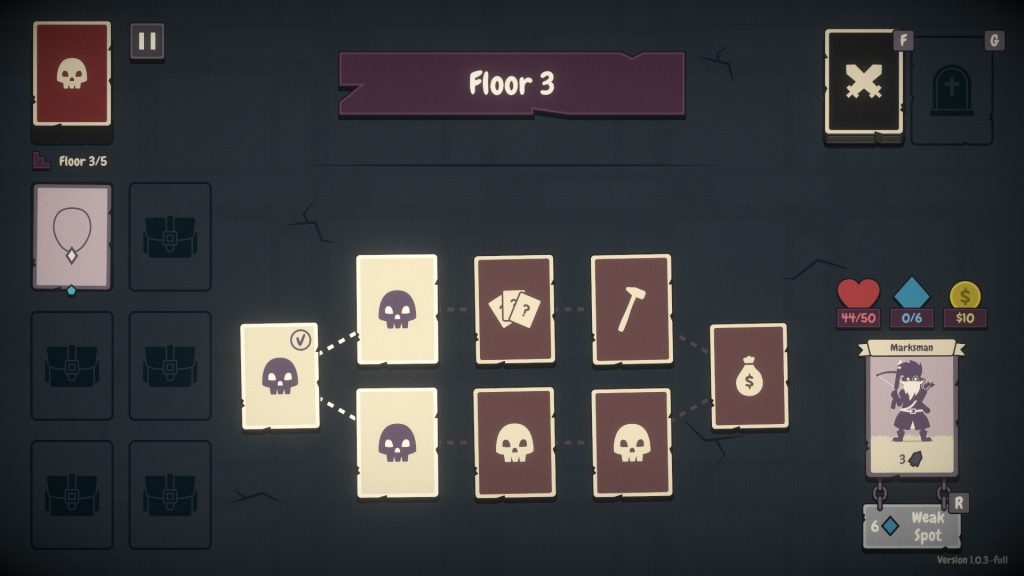
Arcade games and shooters can often get away with having a limited amount of story. In fact, any genre that focuses largely on action above anything else just needs enough to keep you grounded. With games like these you just want to be in the thick of it, and having a deep narrative is potentially going to break immersion. Many roguelites, on the other hand, are strategic in nature. When you are placed in a situation where you are undertaking a quest of some description, you really want to know why you’re doing it. The same applies to a lot of platformers. Anything, where you’re going to be taking a character through what might be hours of gameplay, is asking for some sort of story. We don’t need a book’s worth of lore like we would in a good RPG but we still need something to keep us immersed and give us reason to keep going. Sadly, Pairs & Perils has none of this.
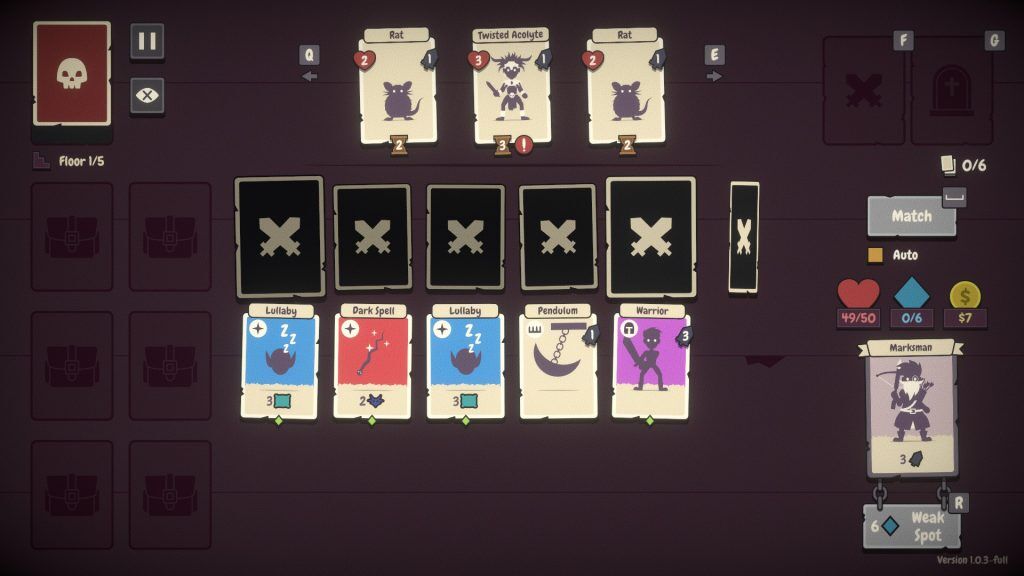
When I booted up Pairs & Perils and started my first run I was expecting to be introduced to my character and given an idea of why I was stepping into this dangerous dungeon. There was no introduction, I was just sent to the same sort of map I’ve seen in every other roguelite and then thrown into the mix. I had no idea what my ultimate goal was and wasn’t given any inkling of setting or why I was flipping cards. It’s easy to say that none of this matters, but I disagree. If I’m furthering a story, I’ll keep coming back to see what’s going to happen next. As this game has a complete lack of one, although it’s fun, I have less impetus to keep going over longer periods.

My next problem comes with the flow of the game. When cards are dealt you’re given a short period to remember them before they flip. This is fine but it feels shorter than it needs to be. I’m not asking for a full minute to memorize the board but a few more seconds would have been great. You might remember one or two pairs in that time but that’s going to be about it. At the beginning of the game, you don’t have a lot of cards and this isn’t a big problem, but as you progress your board will fill up and the extra memory time becomes crucial. Not all of the cards on the board are beneficial to you either. Trap cards that will harm you when flipped will also appear amongst those from your deck. If you’re paying attention to these you aren’t memorizing your own cards and in turn, this makes play more difficult.
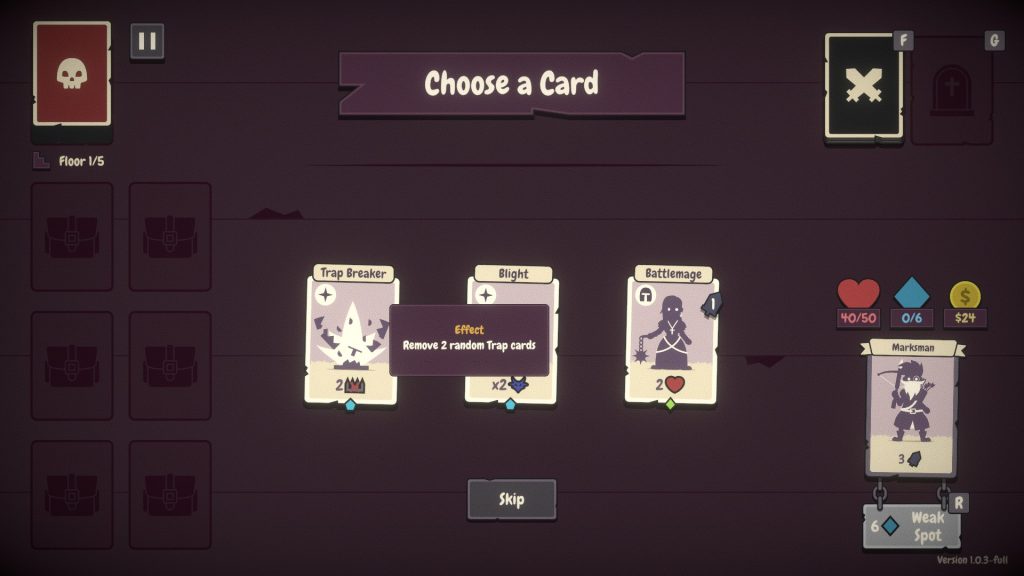
After you match a certain number of cards successfully new cards are added to your board and you are given another few seconds to remember them. I found myself falling into a rhythm of only remembering the new pairs because they were easier to see. I knew when I’d matched these another set would drop and I’d remember those, and so on. The problem with this is that you’re not using your whole board and this sends any element of true strategy out of the window.
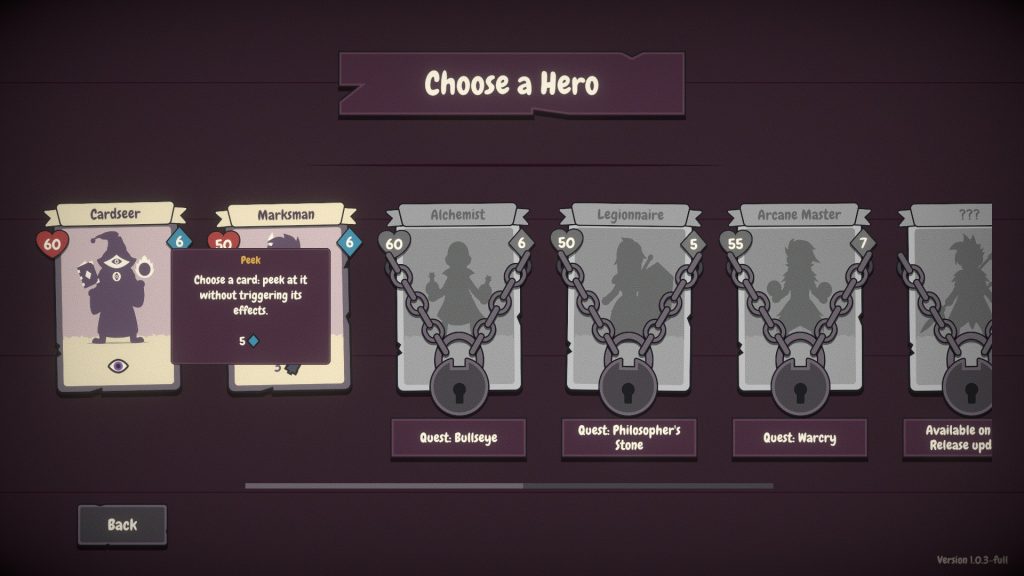
The other issue I have with respect to strategy in Pairs & Perils comes with how cards are going to affect your opponents. The whole point of a strategy game is to think ahead. You need to be able to deal with whatever your opponents are going to throw at you, and therefore, plan accordingly. As this is a game of memory you spend all of your time with your eyes fixed on the cards. Checking to see what the enemy is going to do next or even thinking about the order you need to play your cards detracts from this because it’s very easy to lose your thread. This makes what is a cool battle mechanic a bit redundant. You could be battling anything and it wouldn’t really matter because you aren’t paying much attention; your sole goal is memorizing those cards. This isn’t necessarily the fault of the game, it’s a byproduct of what you’re being asked to do but it still brings something that should be quite rounded down to a basic play loop.
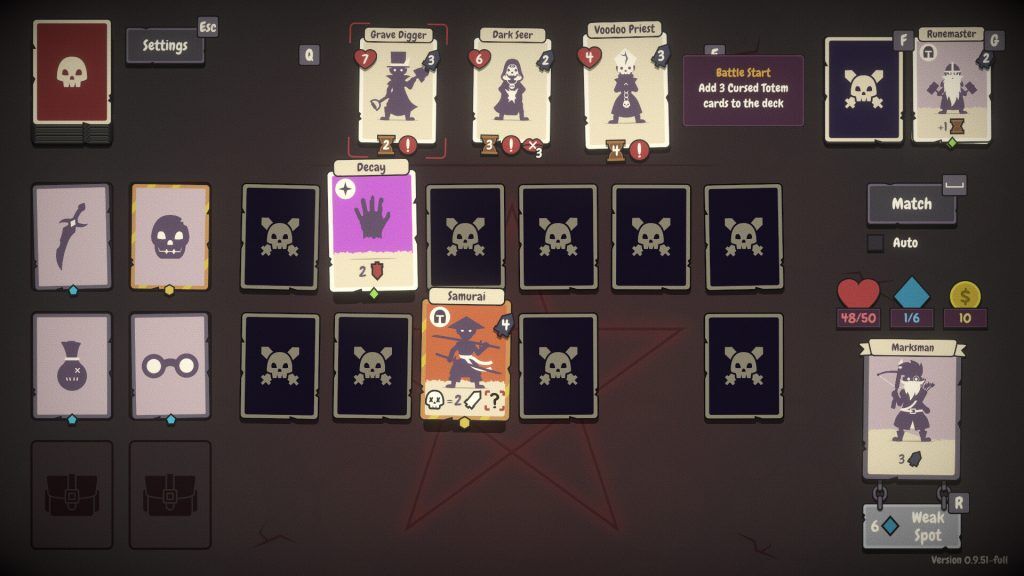
Mechanically Pairs & Perils is sound. The matching mechanics work fine and the other elements we would expect in a roguelite deck-builder are there. You unlock new cards and characters as you go and then upgrade them as you enter certain rooms. If you’ve played a lot of games in this genre you’re going to get much of what you’d expect to see. The controls are fine and with respect to nuts and bolts the graphics are perfectly serviceable for this kind of game.
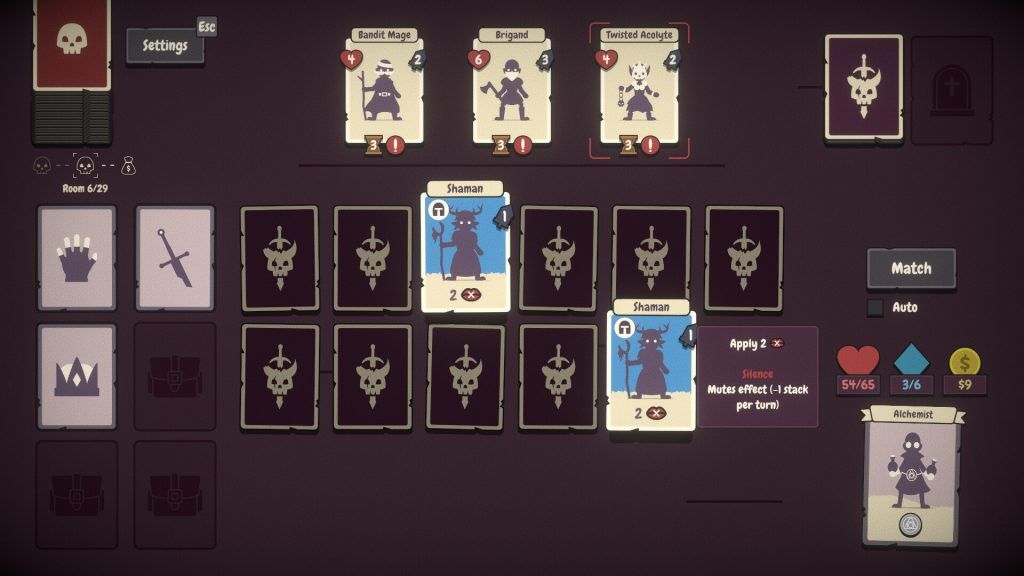
Ultimately Pairs & Perils is a roguelite CCG with an interesting gimmick at its heart. This isn’t enough though, to make it stand out from the crowd when we take into account the problems that gimmick is bringing to the experience as a whole. This is the sort of thing that’s fine in short bouts and it isn’t a hugely expensive title. I would be happy to pay more though for something that felt more polished. All in all, this is a game that’s okay in lots of senses and uses some innovative ideas. Sadly, okay isn’t enough to make this something that I’d be going out of my way to recommend.
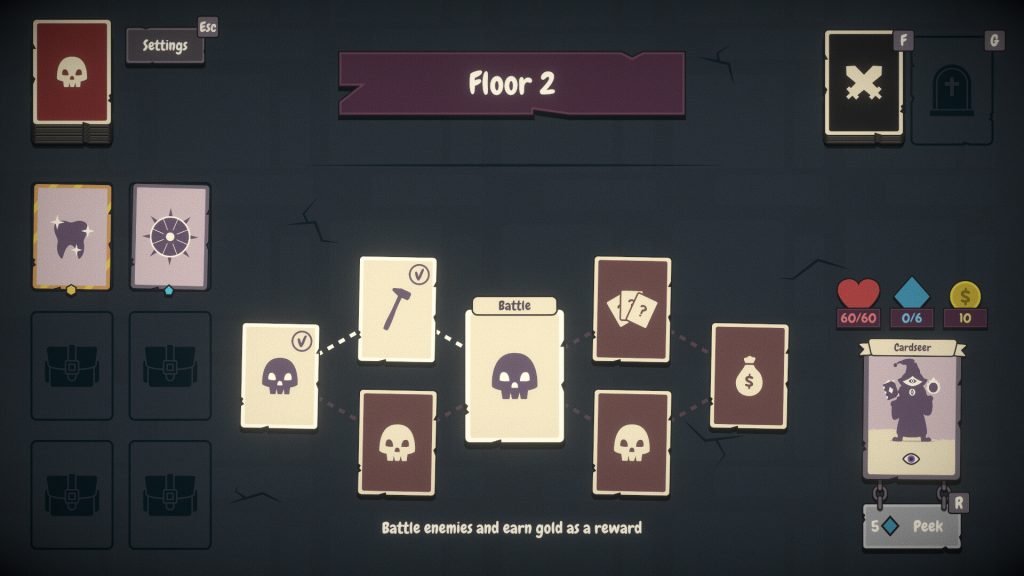
If the devs add some story and give this game a more well-rounded and balanced feel I can see Pairs & Perils being elevated to a game that’s definitely worth your time. As it stands, this is a fun but pretty forgettable title when compared to a genre that’s already quite crowded. If you’re gagging to give this title a go I don’t think you’ll be throwing your money away, but there’s better out there if you’re just shopping around.
This review is based on a retail copy of the game provided by the publisher.
A balancing act
- Look and feel 7/10
- Challenge 7/10
- Replayability 6/10
- Value for money 6/10
6.5/10
Execution problems
Pairs & Perils has a really fun mechanic at it’s core but the execution leaves a little to be desired. For all the things that make this game fun and intreaguing there are an equal amount letting it down. A lack of story and some mechanics that could use a bit of polish are making what could be a great game just an okay one. A few updates could certainly change my mind about this title but for now it’s sitting very much in the good but not great category.
Originally posted by thatvideogameblog.com





